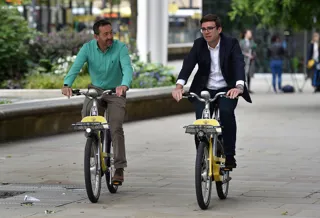Andy Eastlake, managing director of Zemo Partnership
The introduction of CAZs (LEZs – Low Emission Zones in Scotland) in pollution hotspots across the UK is an essential part of the policy mix to meet legal targets in these areas and, crucially, deliver cleaner air to residents.
With Bath’s CAZ already live and other CAZs (or variants) due to start, or be extended, in Oxford, London, Portsmouth, Manchester and elsewhere in 2021/2, the challenge for fleets with urban operations is growing and will impact on future operating and purchasing decisions.
With Euro 6 (diesel), Euro 4 (petrol) cars, taxis and private hire vehicles (and Euro VI trucks, coaches and buses) meeting minimum compliance standards allowing access to CAZs without charge, there are still plenty of conventional vehicle options available.
Nearly all new vans built since September 2016 meet Euro 6 and all petrol cars registered since 2006 have had to meet Euro 4 with many complying before these dates. However, fleets operating older diesel vans face one of the greatest challenges.
Vans and van-derived minibuses were one of the last vehicle categories to adopt Euro 6 emissions standards, which means there are more Euro 5 diesel vans and minibuses on the roads in legacy fleets.
While there are some retrofit solutions for specific vans, with more coming, they can be complex to fit and the cost is relatively high, so it may be cheaper to replace than to retrofit standard vans.
There are a greater range of retrofit options now available for trucks and these are generally more cost effective. There are funds available in many areas to help with the costs of complying through various routes.
Encouragingly, there is now a growing range of battery electric vehicles in the van (and, now, even truck) category, giving operators the opportunity to future-proof their fleets, not only for CAZs but, potentially, zero emission requirements.
Costs for plug-in vehicles are falling and most fully electric vans are eligible for the Plug-in Van Grant, worth up to £6,000 for large vans (more for trucks).
Transport for London’s LoCity project has a Low Emission Vehicle Finder (developed by Cenex) which lists 68 battery electric commercial vehicles, of which 27 are available now and 15 available for order or on request.
These range, for example, from the relatively long established Nissan e-NV200 small van with a 40kWh battery and 124-mile operating range, to Vauxhall’s Vivaro-e medium van with an operating range of up to 205 miles and options for batteries to best suit the operation (and pocket).
Fleet managers and van operators do, indeed, face a challenge meeting the new CAZ requirements. However, with the growing range of options available and the array of information and official support including incentives and grants, the CAZ challenge should be regarded as a ‘prime opportunity’ to make the leap into the latest, cleanest and most efficient vehicle for any operation, and a chance to show your customers how your company is clearly on its own path to zero emissions.
Zemo Partnership’s annual conference ‘Making it real: What does the zero emission revolution mean for you?’ takes place on Tuesday July 20 and is free to delegates.
For more on the impact of clean air zones on fleets, click here.





















Login to comment
Comments
No comments have been made yet.